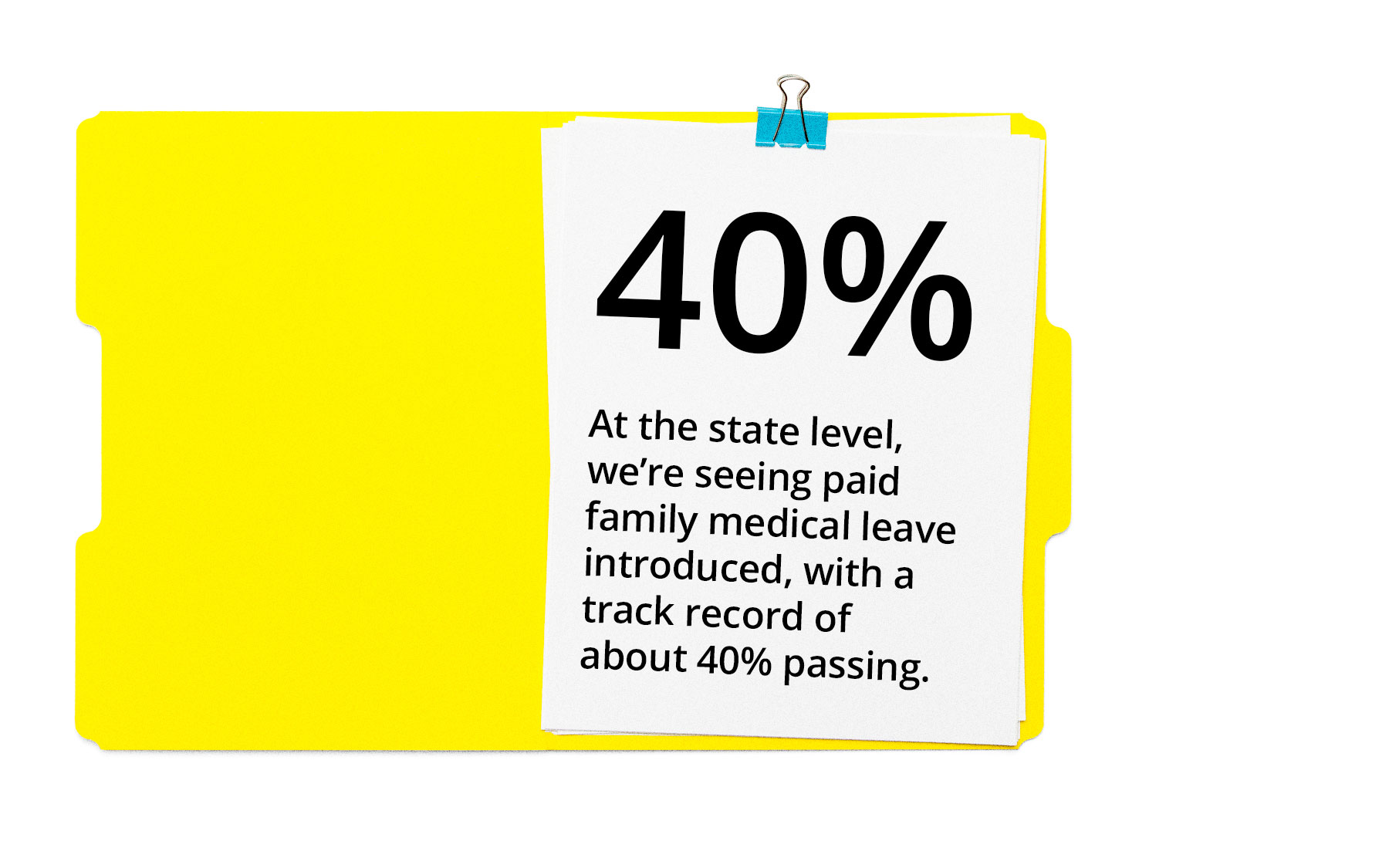CONTRIBUTORS
MAX KOONCE
chief claims officer, Sedgwick
BRYON BASS
senior vice president, workforce absence, Sedgwick
The Biden administration has reached its first hundred days — long considered a key benchmark for new presidents as we begin to see what legislation they’re focused on (particularly important when a new party takes over), who they’ll choose to serve in key roles and how their policy may vary from the previous leader’s. And, as is always the case, there’s one thing we can surely predict when an administration changes hands: unpredictability.
A look back
Historically, we know what each platform looks like for our industry. The Republican party generally is a proponent of limited government involvement in economic policy and less business regulatory engagement, with the objective of promoting economic growth. The Democratic party generally places more focus on the labor movement and growing the economy by empowering the individual worker, utilizing government regulation as a tool to protect workers’ fundamental rights and encourage safety. During a Republican-led administration we tend to see more business-centric policy, whereas a Democratic-controlled administration will often focus on more employee-centric policy.
The here and now
Based on those historic trends, there are a few changes to compliance requirements we can expect under the new administration, and some we’re already seeing come to fruition. In the casualty line, as in all others, it’s clear the post-COVID economy will be different than the pre-COVID economy; as NCCI outlined in their final quarterly economics briefing of 2020, changes affecting labor markets will also affect casualty:
- With the slowing rate of job recovery and increasing share of permanent layoffs in 2020, we should expect to recover more slowly in 2021 than we did last year.
- Job losses concentrated among low-wage, low-skilled workers will likely prolong the period of employment adjustment.
- Employment shifts from small businesses to larger may reduce workers’ compensation premiums, via self-insurance and large deductibles.
- Existing trends toward digitization, automation and contract work arrangements may also mean lower employee headcounts in affected occupations.
- Continued at-home and remote work may affect the nature and frequency of workplace injuries.

We can also expect, at some point over the next four years, renewed discussion around paid leave as part of the Family and Medical Leave Act (FMLA). It’s reintroduced nearly every year but has yet to gain tangible traction; there is, however, increased focus in the wake of the COVID crisis. Last year, Congress passed the Families First Coronavirus Response Act (FFCRA), which required “certain employers to provide employees with paid sick leave or expanded family and medical leave for specified reasons related to COVID-19.” At the state level, we’re seeing paid family medical leave introduced, with a track record of about 40% passing. We’ll see a multitude of states activate this type of regulation between now and 2024.
Considerations for 2021
- COVID-19 presumptions: 15 states have enacted workers’ compensation compensability presumption laws — either by executive order or legislative action — and several more are considering them in their 2021 legislative session. Each considered bill is retroactive, mandating reevaluation of claims since March 2020 for compensability determinations.
- Telemedicine: We saw a significant increase in use beginning in March 2020; it began to level off in September and is stabilizing at this point. We can expect to see state regulatory “fine tuning” this year when it comes to telemedicine.
- Vaccinations: Businesses are ranging from encouraging to mandating employees to get vaccinated before returning to work; some are providing incentives to employees who participate. Case by case and state by state, employers should be aware that they may face workers’ compensation exposure for any adverse reactions to a mandated or “strongly encouraged” vaccine policy.
- Workers’ compensation considerations aside, another area of discussion regarding vaccination mandates and encouragement by employers is the potential for discrimination claims by those who do not attain the vaccine due to beliefs, disabilities and/or other reasons. Because these individuals would not be entitled to any employer incentive, there is the potential for discrimination lawsuits if the employee is in a protected category.
- OSHA: We can expect OSHA activity to increase in 2021, with a greater focus on inspections, general duty clause citations for COVID-19 violations of CDC guidelines, a permanent infectious disease standard and enforcement of the 2016 OSHA anti-retaliation rule.
- Employer’s liability: We may see more attempts to evade the exclusive remedy under workers’ compensation for COVID-19 lawsuits against employers, alleging failure to provide a safe work environment, exposure of employees’ families or wrongful death due to failure to adhere to CDC guidelines.
- Liability litigation: The social and economic response to the pandemic led to lower claim activity for the duration of the year. Court closures slowed resolution of litigated matters, basically putting on pause the number of large verdicts. This continues to present an opportunity to push for resolution of litigated matters as opposed to the prolonged process to attain new trial dates. Additional concerns with litigation include:
- Jury pools (e.g., older jurors potentially being excluded because of increased COVID-19 exposure risks)
- Larger venues for jury trials to ensure social distancing and reduced risk of possible exposure
- A backlog of cases prolonging the trial process
Keep in mind
In order to help our clients stay (or get) compliant as we move into the second half of 2021 and beyond, there are several key legislative and regulatory issues we will be following closely:
- Whether you’re introducing a new paid leave program or considering changes to your existing program, keep a close eye on the introduction of state- and federal-level bills related to mandated paid family and medical leave. In some states, employers with existing paid leave policies which provide equivalent rights may be exempted from participation in the state program; we may see this at the federal level as well. Generally, this results in lower overall cost to the employer, and allows a bit more control and insight into their employees’ use of the benefits.
- Continue to evaluate the relative risk associated with mandating vaccines. Consider policies which encourage vaccination, while ensuring those in protected categories are not discriminated against.
- Stay abreast of the federal regulatory environment, specifically regarding OSHA.
- Ensure a continued focus on resiliency in your risk management program. Assess and leverage your risk strategically for short-term tasks and long-term plans alike.
- As many states continue to consider expanding the nature of what is covered under workers’ compensation beyond traditional work-related risk, the industry must remain diligent in expressing its views on what workers’ compensation should represent.
